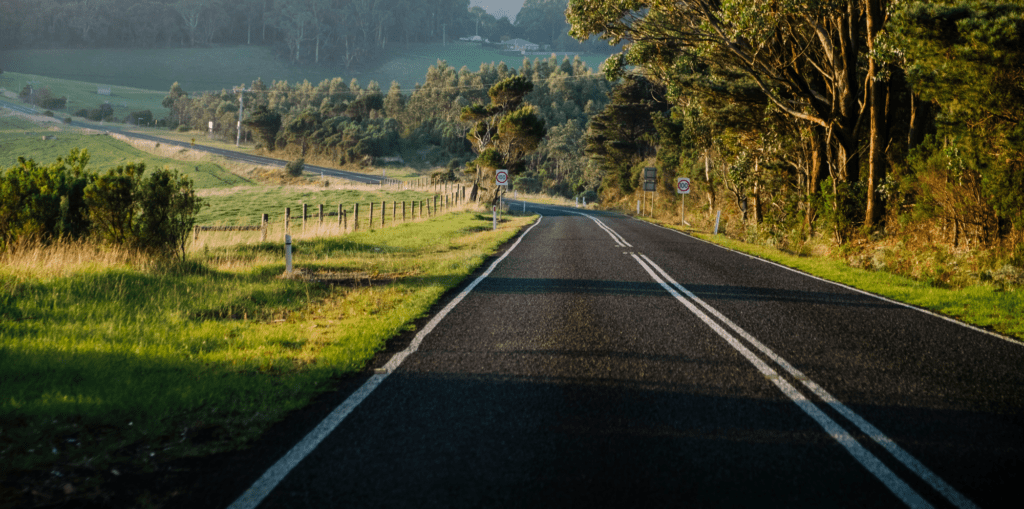
Driving in rural areas presents unique challenges, even for those who might consider themselves seasoned drivers. Although many learners’ driving experience is primarily city-based, due to the concentration of test routes in urban areas, mastering country roads is essential for a well-rounded skill set.
Understanding the Challenges
Country roads are less predictable than their urban counterparts, presenting obstacles such as wildlife crossings, narrow lanes, and the need for sharp manoeuvres. These factors require a different approach to ensure safety and confidence behind the wheel.

National Speed Limit
Navigating country roads requires an understanding of the national speed limit, especially due to the scarcity of speed restriction signs in rural areas compared to urban settings.
Recognising the National Speed Limit
When driving through villages, a 30mph speed limit is commonly enforced to ensure safety. However, once you venture further into the countryside, where signs and streetlights become rare, the national speed limit typically comes into effect.
On single carriageway roads—roads without a central reservation to separate opposing lanes of traffic—this limit is 60mph. Given the narrowness, potential lack of clear road markings, and the often winding nature of rural roads, this speed can seem daunting.
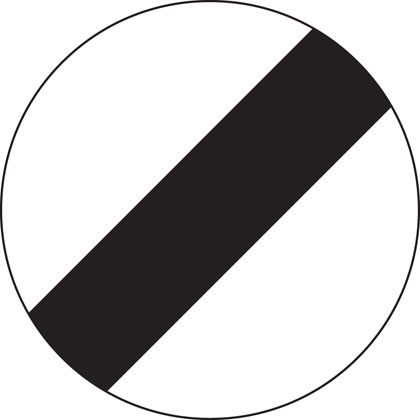
Speed Limit vs. Safe Driving
It’s crucial to remember that the speed limit represents the maximum allowed speed under ideal conditions, not a speed you must aim to achieve.
Road conditions, weather, visibility, and traffic flow all influence the safe speed to travel. As per the Highway Code, drivers are advised to:
“Adapt your driving to the appropriate type and condition of road you are on.”
This means being prepared to slow down significantly for bends, remaining vigilant for wildlife and pedestrians, and being cautious of slow-moving vehicles.
The overarching principle is to adjust your speed to maintain safety, not to meet a set speed.
Poor Lighting
The countryside is known for its significantly darker nights compared to urban areas, primarily due to lower levels of light pollution.
While this makes rural areas ideal for stargazing, it also necessitates the effective use of vehicle lights to ensure both visibility and safety on the roads.
Using Your Headlights Effectively
Dipped headlights are generally sufficient for illuminating the road ahead under normal conditions, providing clear visibility of the immediate lane.
However, when the roads are empty, activating your full beams can significantly enhance your vision by illuminating further distances and revealing the road’s upcoming contours.
This advanced visibility is especially beneficial for preparing for bends and turns in the road.

Adjusting to Oncoming Traffic and Weather Conditions
It’s crucial to dip your headlights back to normal as soon as you encounter oncoming traffic or enter areas with street lighting to avoid dazzling other road users.
Additionally, in adverse weather conditions such as fog or snow, sticking to dipped headlights—or using fog lights if visibility is severely compromised—is advisable.
Using full beams in these conditions can cause glare, further impairing your visibility and making driving conditions more dangerous.
Animals in the Road
Encountering animals on rural roads is a common experience, presenting unique challenges for drivers accustomed to urban environments.
Whether encountering horses, livestock, or smaller creatures, it’s crucial to know how to approach, pass, and safely move away from them.
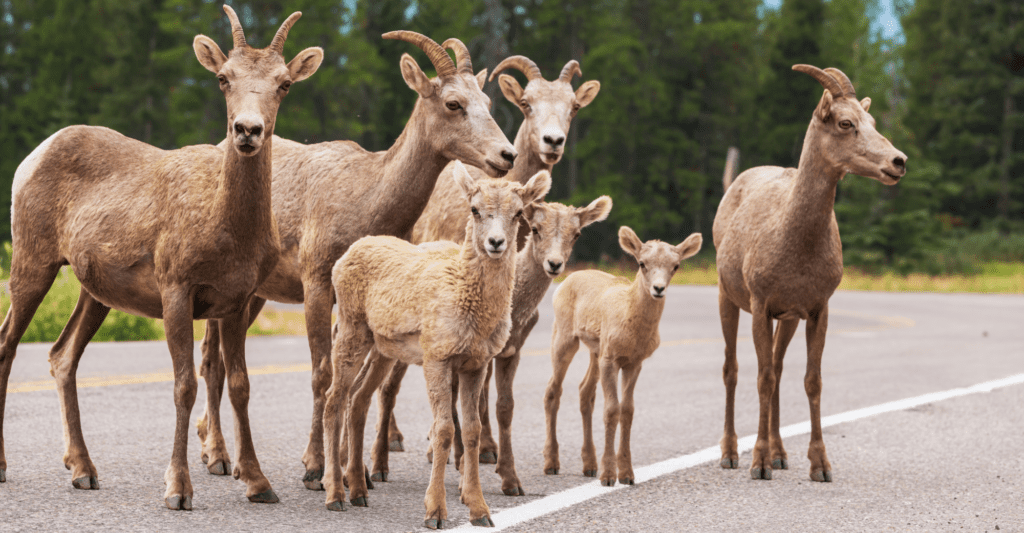
Horses on Country Roads
Horses, whether wild, led, ridden, or pulling a cart, require cautious and considerate handling by drivers. Due to their skittish nature and the potential danger they pose if frightened, drivers must take specific precautions:
- Slow down significantly, to a maximum of 10 mph, upon spotting a horse ahead.
- Avoid using your horn or revving your engine, as these actions can scare the animal.
- Pass the horse very slowly, maintaining at least a two-metre gap.
- After passing, accelerate slowly to avoid startling the animal.
Remember, horses may be ridden by children, can walk two abreast, and are likely to bolt if spooked. Horse riders may also use hand gestures to communicate with drivers.
Livestock and Other Large Animals
Beyond horses, rural roads can also bring you face to face with herds of cattle, flocks of sheep, and other large animals, sometimes unexpectedly. The Highway Code advises:
- If the road is blocked by animals, stop and switch off your engine until they have cleared the area.
- Reduce your speed and watch for signs of movement, especially where road signs indicate the presence of animals.
Large animals like deer can cause significant damage if collided with. If you see a deer, dip your full beams to prevent the animal from becoming disoriented.
Slow down or stop if necessary, using hazard lights to alert other drivers, but avoid swerving dangerously.
Small Animals
Small animals, from cats to hedgehogs, may also cross your path on country roads. Sudden directional changes are common, and the instinct to swerve must be controlled to prevent accidents.
If braking is necessary, ensure it is safe to do so without causing a hazard to vehicles behind you.
It’s important to note that if you hit certain animals, you are legally obliged to report the accident to the police. This requirement underscores the seriousness of driving responsibly in areas where wildlife is prevalent.
Farm Vehicles and Overtaking
Encountering farm vehicles is a common occurrence on rural roads, particularly during harvest time from late summer to early autumn.
Though less frequent than city traffic, these large vehicles can significantly slow your journey, necessitating careful and considerate overtaking strategies.
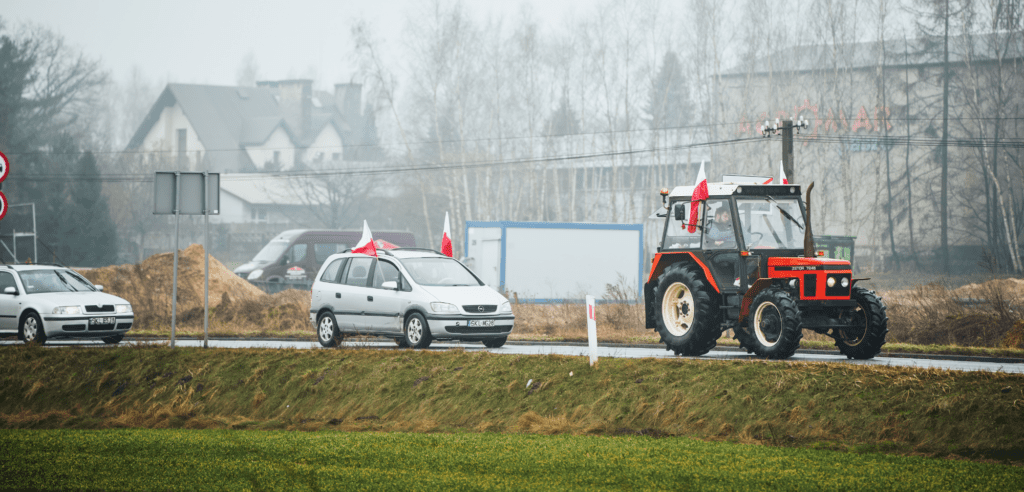
Understanding Farm Vehicle Behaviour
Farmers and contractors are typically aware of the delays they cause and will often attempt to allow traffic to pass when safe to do so.
However, their need to move between locations means they cannot always give way. Despite seeming to occupy the road for long stretches, farm vehicles usually cover only short distances.
When a farmer signals that it is safe to overtake, proceed with caution and rely on your judgement to ensure it is safe to do so.
Tips for Safely Dealing with Farm Vehicles
- Maintain a Safe Distance: Keeping back from large farm vehicles enhances your field of vision around them and ensures safety, particularly if an item were to dislodge from the vehicle.
- Plan for Delays: Anticipate the possibility of being slowed by farm vehicles and factor this into your journey planning to avoid frustration.
- Exercise Patience: Use any delay as an opportunity to enjoy the countryside scenery, adopting a calm and appreciative approach to the slower pace of rural driving.
Unmarked Junctions
Unmarked junctions are prevalent on rural roads, in contrast to the well-signposted and clearly marked junctions found in urban and suburban areas.
These junctions lack the usual indicators of priority and direction, requiring drivers to navigate them with care and consideration.
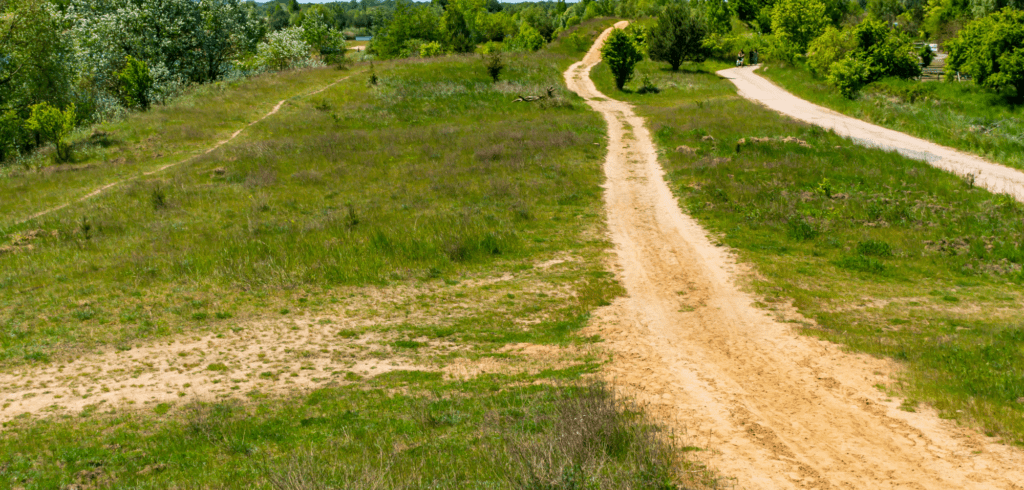
At an unmarked junction, no driver has inherent priority, compelling road users to employ common sense and caution. This approach is designed to foster a safer driving environment by encouraging all drivers to proceed carefully.
Strategies for Safe Passage
- Stay Vigilant: Look for signs of potential junctions, such as gaps in hedges or other roads joining yours, to anticipate upcoming unmarked junctions.
- Reduce Speed: Slowing down when you suspect an unmarked junction is near allows you more time to assess the situation and react appropriately.
- Communicate Intentions: Use your indicators, adjust your road position, and make eye contact with other drivers to clearly convey your intended direction.
- Follow General Principles: Adhere to basic driving rules like ‘first come, first served’, and give priority to vehicles proceeding straight over those turning right.
Understanding how to approach these junctions with the right level of caution and awareness can greatly enhance safety for all road users in rural areas.
READ: Guide to Road Markings
Vulnerable Road Users
The presence of pedestrians on rural roads is more common due to the frequent absence of pavements, encompassing families, joggers, and pet owners enjoying the countryside. This increases the responsibility of drivers to ensure the safety of more vulnerable road users.

Pedestrian Safety in Rural Areas
Many pedestrians adhere to the Highway Code by walking on the right-hand side to face oncoming traffic, moving into single file when needed, and staying close to the edge of the road.
However, as drivers, we are in control of much more powerful and potentially dangerous vehicles, and thus bear a greater duty to adjust our driving to protect them.
Ensuring Safety for All
- Stay Vigilant: Especially around blind bends or where your view might be obstructed by natural features like hedges or trees. Pedestrians may not always be immediately visible.
- Slow Down and Be Prepared to Stop: Anticipating the need to stop gives you more time to react safely to pedestrians in the road.
- Give Plenty of Space: When passing pedestrians, do so with care, ensuring there is ample space between your vehicle and them to avoid causing distress or danger.
The hierarchy of road users introduced in the 2022 Highway Code updates emphasizes the importance of protecting those who are more vulnerable on the road.
Following these guidelines not only ensures compliance with the law but significantly contributes to the safety and enjoyment of rural environments for everyone.
Road Condition and Weather
The state of country roads in the UK often differs from their urban counterparts, presenting unique challenges due to less frequent maintenance.
Issues such as pot holes, hidden dips prone to flooding, and uneven cambers can complicate rural driving.
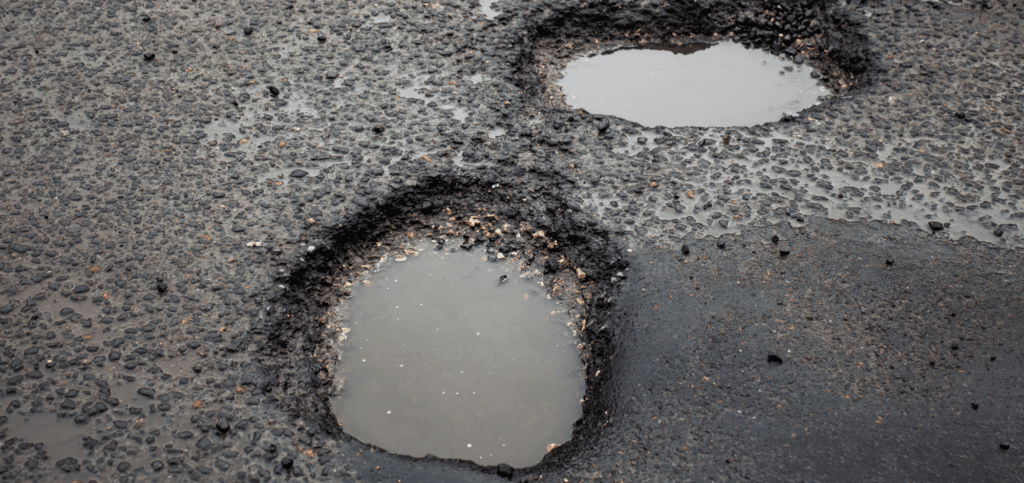
To safely navigate these conditions, consider the following strategies:
- Reduce Speed: Travelling at a lower speed allows for more time to react to unexpected road surface irregularities.
- Stay Informed About Weather: Being aware of recent weather conditions, such as rain or high winds, can help anticipate road hazards.
- Scan Ahead: Continuously look ahead for signs of road damage or hazards that could pose a risk if encountered at high speeds.
Dealing with Adverse Conditions
- Standing Water: Approach with caution, as its depth and what lies beneath can be deceptive. Driving through floodwater carries risks of aquaplaning, where you lose control of the vehicle due to a layer of water between the tyres and road surface.
- After High Winds: Be on the lookout for debris on the road, such as fallen branches, which can be hazardous if struck.
Understanding how to adjust your driving to the conditions of rural roads and the weather can significantly enhance safety and reduce the risk of accidents or vehicle damage.
Narrow Roads and Passing Other Vehicles
The narrowness of country roads compared to urban streets presents distinct challenges, especially when it comes to safely passing other vehicles.
These roads often lack central markings, necessitating heightened spatial awareness.

Safely Passing on Narrow Roads
To navigate these tight spaces safely, it’s crucial to:
- Assess the Available Space: Estimate if there’s enough room to pass an oncoming vehicle by visualising your vehicle’s width in relation to the available space.
- Adjust Your Speed: The narrower the road, the slower you should go to ensure you have adequate time to react and manoeuvre.
- Use Mirrors Wisely: Rely on your wing mirrors to gauge distances and maintain a clear berth from roadside obstacles as you edge forward in particularly tight spots.
On single-track roads, which only accommodate one vehicle at a time, passing requires cooperation:
- Anticipate Oncoming Traffic: Be proactive in spotting oncoming vehicles to prepare for passing.
- Identify Passing Places: Keep an eye out for designated areas where vehicles can pass each other safely.
- Communicate Intentions: Use speed, positioning, and eye contact to signal your intentions to other drivers, facilitating a smooth passing process.
- Act Considerately: Yield to oncoming traffic when necessary, and be prepared to reverse into a nearby passing place if it makes more sense for you to move.
- Mind the Surroundings: When pulling over, be cautious of the roadside terrain, including ditches and hedge trimmings, to avoid damage to your vehicle.
Adapting to the unique conditions of rural driving by exercising caution and courtesy ensures a safer experience for all road users.
Blind Bends
Blind bends are corners that cannot be seen around, posing a particular challenge on minor roads where advance warning signs may not be present. Navigating these requires heightened awareness and preparation.

Anticipating Blind Bends
To prepare for what lies beyond a blind bend, consider the following indicators:
- Road Markings: Look for any markings, such as cat’s eyes, that can help gauge the road’s curvature.
- Natural Indicators: Observe the direction of hedges or trees alongside the road, which can hint at upcoming changes in direction.
- Technology Assistance: Use a sat nav to anticipate twists and turns ahead.
Be mindful of skid marks on the road, as these may indicate a particularly sharp bend. Always expect the possibility of encountering pedestrians, slow-moving vehicles, or animals just out of sight.
Handling Blind Bends Safely
When approaching a blind bend, treat it with the same caution as any potential hazard:
- Check Your Mirror: Be aware of the traffic behind you.
- Reduce Speed: Slow down to give yourself more time to react to unseen obstacles.
- Be Ready to Stop: Prepare for the possibility of having to stop abruptly.
By adopting these precautions, you can avoid the need for sudden braking or gear changes on the bend, which can compromise vehicle control.
Maintaining vigilance and readiness to adapt to unexpected conditions is key to safely navigating blind bends.
Road Signs on Rural Roads
Navigating rural roads requires an awareness of road signs that are particularly prevalent in countryside settings.
These signs provide crucial information about potential hazards or changes in road conditions, ensuring the safety of all road users.
Common Rural Road Signs
Here is a list of road signs you’re likely to encounter on rural routes:
- Road Narrowing on Both Sides: Indicates that the road ahead becomes narrower, requiring reduced speed and increased caution.
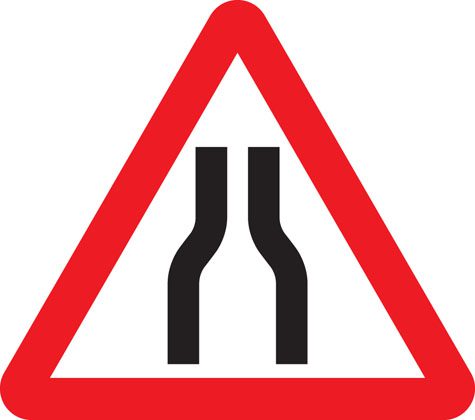
- Accompanied Horses: Warns of potential horse riders on or near the road, signalling the need to drive slowly and give wide berths.
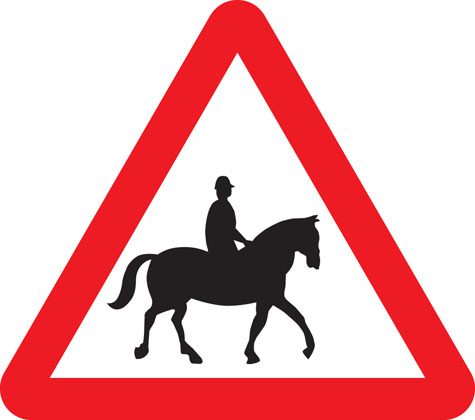
- Cattle/Farm Animals: Alerts drivers to areas where livestock may be crossing or present near the road.
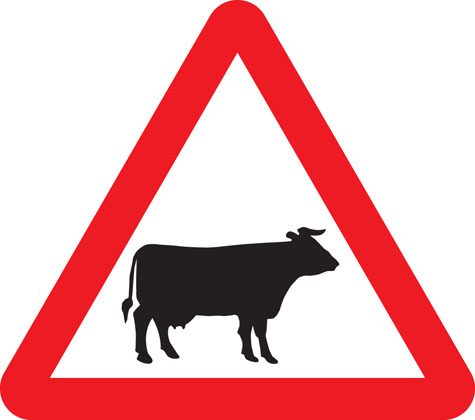
- Deer/Wild Animals: Indicates zones where wild animals are likely to cross, necessitating vigilance, especially during dawn and dusk.
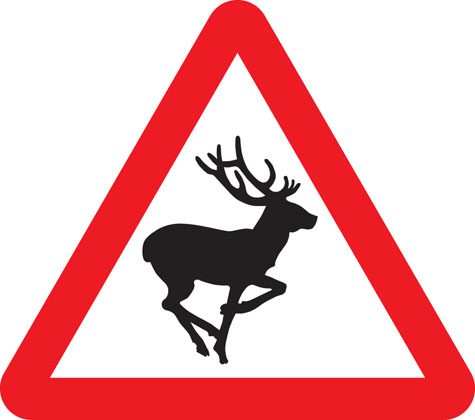
- Wild Horses: Similar to the deer/wild animals sign, this warns of areas where wild horses may be encountered.
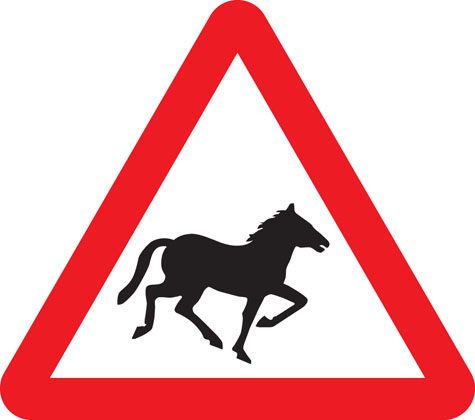
- Soft Verges Ahead: Alerts to the presence of soft road shoulders that may pose a risk if strayed onto.
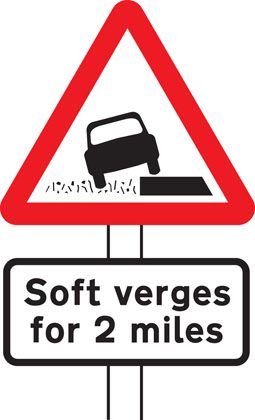
- Ford Ahead: Indicates a shallow place in a river or stream where water may cover the road, requiring careful navigation.

- Level Crossing Ahead Without a Barrier: Warns of a level crossing without automatic barriers, requiring drivers to stop, look, and listen for trains before proceeding.

Recognising and understanding these signs can greatly enhance safety when driving through the countryside, helping drivers to anticipate and respond appropriately to the unique challenges rural roads present.
Frequently asked questions
When navigating country roads, it’s essential to drive at a speed that allows you to feel both safe and confident.
It’s advisable to avoid overtaking whenever possible, as the risks often outweigh the benefits on these less predictable routes. Always be on the lookout for pedestrians and animals, who might unexpectedly cross your path.
High hedges, blind bends, and closed junctions can significantly impede your vision, so it’s vital to approach these areas with extra caution.
Road signs are frequently positioned along country roads, providing critical information; make it a habit to remind yourself of their meanings regularly.
Proper use of your headlights and full beams can greatly improve your visibility, especially during the night or in poor weather conditions.
While navigating, try to avoid large potholes to prevent damage to your vehicle. Finally, ensure you don’t cut corners; this practice can lead to dangerous encounters with oncoming traffic or obstacles on the road.
Staying safe on rural roads requires a set of specific driving skills. Being proficient in confident and accurate reversing is crucial, especially for times when you need to reverse into a passing place. This skill can often make a significant difference in narrow road scenarios.
Alertness and observation are vital; they ensure you’re fully aware of blind bends, debris on the road, and upcoming junctions. These elements can appear suddenly and require immediate reaction to avoid potential hazards.
Having a keen sense of when to change gear is another essential skill that aids in smoothly slowing down or speeding up, adapting promptly to the changing conditions typical of rural driving. This awareness can enhance your control over the vehicle, contributing significantly to your safety and that of others on the road.



